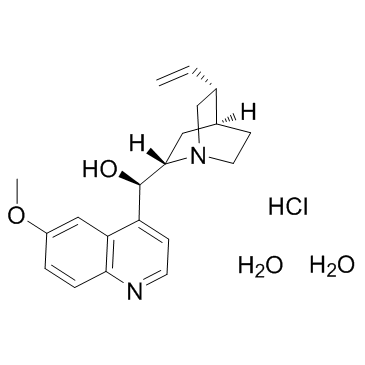Photostability profiles of the experimental antimetastatic ruthenium complex NAMI-A.
Marjan Bouma, Bastiaan Nuijen, Martine T Jansen, Gianni Sava, Auke Bult, Jos H Beijnen
Index: J. Pharm. Biomed. Anal. 30(4) , 1287-96, (2002)
Full Text: HTML
Abstract
NAMI-A is a novel ruthenium complex with selective activity against metastases currently in Phase I clinical trials in The Netherlands. The photostability of this new agent in solid state and in solution has been investigated utilizing a stability-indicating reversed-phase high performance liquid chromatographic (HPLC) assay and ultraviolet/visible (UV/VIS) light spectrophotometry. In solid state, NAMI-A proved to be photostable. In solution, however, the compound degraded rapidly, in a pH-independent manner in the pH range of 2-5. At alkaline pH, the degradation rate was higher than at acidic pH. The type of buffer species had little influence. NAMI-A concentration was inversely related to the photostability. Addition of photostabilizers (5% DMSO, 2% benzyl alcohol, 0.001% curcumin) marginally increased the half-life. NAMI-A's photostability in solution was influenced to the greatest extent by addition of an alcohol, with the least polar solvent system (50% propylene glycol) providing the most stable medium. Based on the presented results, it is recommended to store NAMI-A solutions in the dark.
Related Compounds
| Structure | Name/CAS No. | Molecular Formula | Articles |
|---|---|---|---|
 |
Quinine Hydrochloride Dihydrate
CAS:6119-47-7 |
C20H29ClN2O4 |
|
Quinine blocks a calcium-activated potassium conductance in ...
1984-09-01 [Br. J. Pharmacol. 83(1) , 3-5, (1984)] |
|
Treatment of severe malaria.
1989-01-01 [J. R. Soc. Med. 82 Suppl 17 , 44-50; discussion 50-1, (1989)] |
|
In situ UV resonance Raman micro-spectroscopic localization ...
2007-04-26 [J. Phys. Chem. B 111(16) , 4171-7, (2007)] |
|
Delay discounting of oral morphine and sweetened juice rewar...
2014-07-01 [Psychopharmacol. Ser. 231(13) , 2633-45, (2014)] |
|
A Microfluidic Platform for the Rapid Determination of Distr...
2015-06-16 [Anal. Chem. 87 , 6265-70, (2015)] |